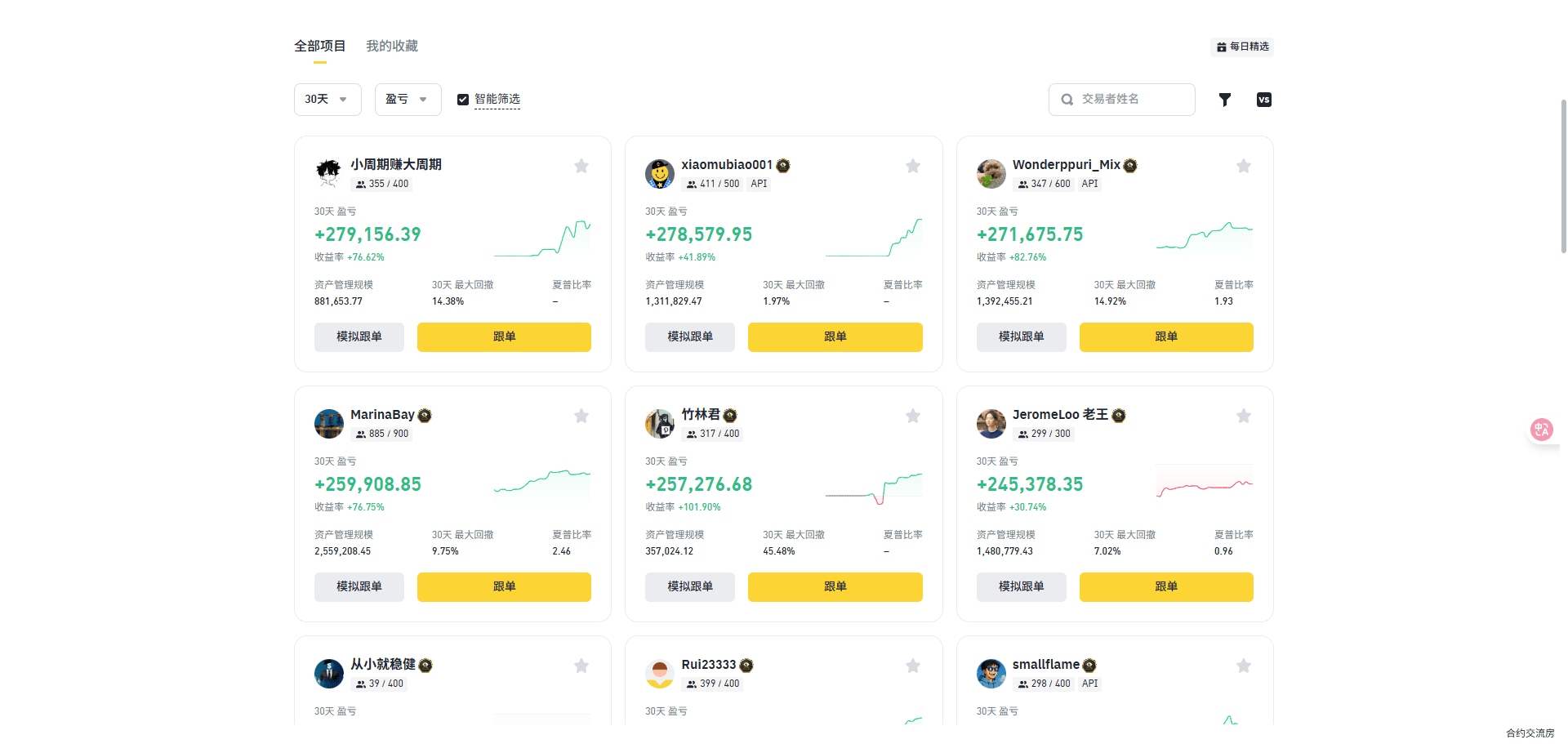
Hello friends, after 7 years in the crypto space, I'm finally going to start posting at Binance Square! I was initially unsure about what to write for my first post, but recently my team and I have been researching the contract copy trading model. From practical trading to backend data processing, we've discovered some interesting things. I'll use these findings as an appetizer for today’s post. (Just to clarify: we’ll only discuss contract copy trading, not spot copying for now!)
Self-disclosure: A while ago, to understand the real copy trading ecosystem, I personally participated in a period of contract private copy trading while following several 'big V' trades, and had my partners help me dig into the real data from exchanges. I didn’t realize it until I looked, and it was quite enlightening:
First, look at the summary
1. The threshold for providing signals is ridiculously low; 500U can easily 'restart your life'
Don’t think that those who provide signals are all big shots; in fact, anyone who can open and close positions and has a few hundred U can be a 'teacher'. I've seen the most exaggerated case where someone with 500U in capital started a signal project and dared to promote it. Due to the low barrier to entry, many signal providers switch projects after failing. We saw someone on Binance with over 200 trades, which frankly means 'trial and error cost is too low.'
2. The number of copy trading users is far fewer than expected
Take Binance as an example; currently, there are only about 7,000 people participating in copy trading, with the number of copy trading users being only tens of thousands. Compared to the massive trading volume, this number is really not that much.
3. High returns may be 'gambled out'
Those annualized returns that are several hundred to thousands, just take a look and don't take them seriously. Many times they are the results of high leverage on small capital; earning 500U on 100U looks like a 500% return, but would you dare to go all in? If you really amplified your capital, you might have already been liquidated.
4. Liquidation is a common occurrence
Just from last week’s market rise and correction, among the two trades I followed, and counting my little partner's simulated tracking users, at least 4 directly got liquidated, not to mention some of those with large holdings who are in the top ranks. Don’t think that 'teachers' won’t incur losses; when the market turns extreme, any strategy could fail.
5. When choosing whom to follow, check their 'overall quality'
Don’t let short-term profits cloud your judgment! Always check the comprehensive indicators of the signal provider: historical drawdowns, holding duration, stop-loss habits. Looking solely at the return rate can easily lead you into the 'trap of scams'; it’s best to cross-verify across multiple dimensions.
6. Understand the industry before following others
Contract copy trading is not a guaranteed profit! If you have no understanding of contract rules, blindly jumping in is likely to result in losses. Participating with small funds, selecting fixed amount models, and not frequently changing whom to follow are all survival rules summarized from painful lessons.
7. First understand the trading habits of the 'teacher'
Before deciding to follow someone, first clarify the style of the signal provider: do they focus on intraday short-term or trend trading? Do they prefer high leverage or low leverage? Is their market direction judgment in line with yours? Otherwise, during market fluctuations, you will only collapse in the conflict of 'trusting them or trusting yourself.'
8. Platform differences determine survival probability
The copy trading ecosystem differs vastly between exchanges; on some platforms, over 70% of copy trading users incur losses, while Binance currently appears to be able to break even. Choosing the right platform helps you at least avoid the 'inevitable loss' traps.
During the data processing in this period, I also discovered many interesting phenomena, such as 'high win rate signals actually causing more losses for copy trading users' and 'the survival rate of signals at 3 AM is the lowest,' among other patterns that I will slowly break down for everyone later.
I wonder if any friends have encountered these pitfalls while copy trading? Or if you have any questions related to copy trading in your mind, feel free to leave a message in the comments. I will continue to share in-depth observations about copy trading models, and for those interested, please follow along. Let’s chat again next time~